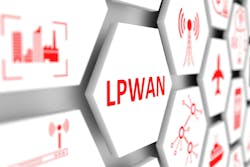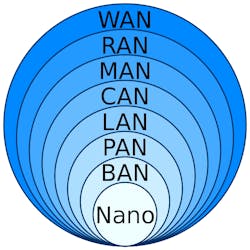Editor’s note: This is the 59th article in the “Real Words or Buzzwords?” series from SecurityInfoWatch.com contributor Ray Bernard about how real words can become empty words and stifle technology progress.
It can be challenging for organizations to adopt innovative IoT technology in a secure manner and integrate it into their existing legacy – but still functional – physical security or building controls systems infrastructure. A recent technology evaluation project required me to examine a portion of the smart IoT sensor landscape regarding sensor technologies that are suitable for use in a variety of building safety and security monitoring applications.
This article is about network technology, but first I want to address the reason that such technology is now important to us.
Time-Critical Personnel Risks
Over a decade ago several clients asked for help in dealing with critical personnel risk situations which, at that time, could only be dealt with using people as there were no workable technologies for such situations.
One of them was a rare lone worker risk among the most valuable long-term company employees working in one of their chemistry labs. On occasion, an employee would work past the end of the afternoon shift to complete a multi-hour timed test in an important series of tests that all must be run within specific time frames. One of the senior, and very dedicated employees, had worked a few hours past midnight and had a heart attack and collapsed onto the floor. He was discovered at the start of the day shift by another employee, who made the 911 call that fortunately saved his life.
A risk assessment prompted the launch of a company-wide wellness campaign – now a common element of most medium and large company’s health programs. The also instituted a firm two-person requirement so that no individual would be in a lone worker situation.
However, in some cases, the lone worker situation can occur unintentionally. Thus, increased indoor night security officer checks were also instituted.
The use of video analytics was considered as a possible solution but soon was dismissed because the cost of video coverage for 100% of facility areas was astronomical, and the state of video analytics at the time would have resulted in hundreds of nuisance alarms.
Another client had a worse situation where one evening an ill employee went into a restroom, collapsed, died, and was found the following morning.
Now, however, such risk situations can be easily and affordably monitored with no nuisance alarms and without privacy invasion. An example from Orion Entrance Control is its small-sensor radar-based human presence and vital sign detection that can determine breathing rate and heart rate, detect coughing and sneezing, and recognize falls or too-long periods of body stillness. In some environments all of those factors can be critically important.
I was in a 15-story building once where an emergency evacuation was conducted due to an unusual cleaning chemical spill whose fumes were being sent throughout the building by the HVAC system. There was no way to confirm a full evacuation until emergency responders arrived and donned hazmat suits. Luckily there were no remaining occupants, but it took over a half hour to determine that fact.
I can’t help but think about how first responders to the World Trade Center towers on 9/11 would have been able to save more people, if they could have accurately pinpointed the locations of every individual in the buildings and prioritized those whose vital signs or stillness indicated they were likely suffering from severe smoke inhalation and could not evacuate on their own.
I believe that the effectiveness of this and other sensor systems will drive significant adoption of such sensors in the same way that modern deep-learning based video analytics has done for video deployments in the retail marketing space. Like with video analytics, in addition to the personal safety and security aspects, there are also many business operational benefits to gain from building sensor data.
Smart Sensor Communications
While researching smart sensor technology I found dozens of smart sensors and smart sensor systems that support a variety of communications technologies. Comparing products was challenging due to the lack of uniformity in how communication capabilities were specified. There were also errors in documentation, such as where Bluetooth was wrongly used to refer to a product that used Bluetooth Low Energy (BLE) for data transmission. The two are not the same and are not directly compatible. That prompted my recent article titled, “Bluetooth vs. Bluetooth BLE.”
I also found products with an amazing array of communications capabilities, including one product whose data communication options were: RS-232, RS-422, Wired Ethernet (10, 100, 1 Gbps, 10 Gbps), Wi-Fi, Bluetooth and Bluetooth LE, Cellular (3G, 4G LTE, 4G, and 5G), LoRa, and LoRaWAN.
I was surprised to see the support for 10 Gbps communications on one of the gateway systems, until I saw the number of devices that the gateways could support, and what a large sensor deployment could require when configured to provide thermal or 3-D mapping images in for verification of alerts which might be required as forensic evidence in some types of incidents.
Another company covered the same overall set of communications technologies, but did so using a number of products whose differences were mainly in the small set of communication capabilities each product offered. Each set of communication options was designed to fit use cases in specific business and industry segments. This lowered the product costs, as they didn’t need to be general purpose devices.
Other companies weren’t so specific about communications capabilities, and would state, for example, “Ethernet, Wi-Fi and LPWAN.” That, of course, left me with questions. What wired networking speed is required and are both frequencies of Wi-Fi supported (2.4 GHz and 5 GHz)? Furthermore, what LPWAN technologies are supported?
LPWAN
LPWAN is a technology category within the WAN (wide area network) spacial context. The initials stand for Low-Power Wide Area Network (or Networking). At first glance that would seem to be a self-contradicting term. How could a wide area network be classified as low-power? One difference is that an LPWAN uses entirely different networking technology (there are several) than a traditional WAN.
In a traditional network, continuous connectivity is expected between the network infrastructure and connected devices. In LPWAN, devices connect momentarily – just enough to transmit a short burst of data. Some devices may even go to sleep until an input signal arrives. That enables, for example, small sensors to run up to 20 years on a single coin battery. Traditional wired or wireless networking energy requirements would drain such a battery in a matter of hours. The “low power” in LPWAN refers to a network of low power devices. There are also special communications protocols that allow multiple uses of sensors, whose data push feeds can be subscribed to by multiple devices and systems.
This is something new to the physical security industry, as security systems haven’t previously been designed to publish data anywhere except a central monitoring point or security operations center (SOC).
IoT Messaging Protocols
“MQTT is a Client Server publish/subscribe messaging transport protocol. It is light weight, open, simple, and designed so as to be easy to implement. These characteristics make it ideal for use in many situations, including constrained environments such as for communication in Machine to Machine (M2M) and Internet of Things (IoT) contexts where a small code footprint is required and/or network bandwidth is at a premium.” (From the official MQTT 3.1.1 specification, which has not advanced to version 5.) The MQTT open specifications are managed by OASIS, one of the most respected, non-profit international standards bodies.
The People Counter is a video-based stereo-vision device from Axis Communications, always an industry leader. The People Counter supports the MQTT protocol, and is evidence that physical security technology stakeholders need to pay attention to the Industrial IoT networking and data exchange landscape. Figure 1 below, from Wikimedia Commons, illustrates the spacial classification of various networks, most if not all of which technology-focused readers will have seen.
Each of these network classification categories contains numerous networking technologies, many of which tomorrow’s physical security systems will include either by way of device deployment or systems integration.
Real Words or Buzzwords? will continue to provide information about the involved technologies and terminology, including the MQTT protocol, so that our forays into the world of Industrial IoT can have more clarity than our earlier industry experiences with Information Technology had.
About the Author:
Ray Bernard, PSP CHS-III, is the principal consultant for Ray Bernard Consulting Services (RBCS), a firm that provides security consulting services for public and private facilities (www.go-rbcs.com). In 2018 IFSEC Global listed Ray as #12 in the world’s Top 30 Security Thought Leaders. He is the author of the Elsevier book Security Technology Convergence Insights available on Amazon. Follow Ray on Twitter: @RayBernardRBCS.




